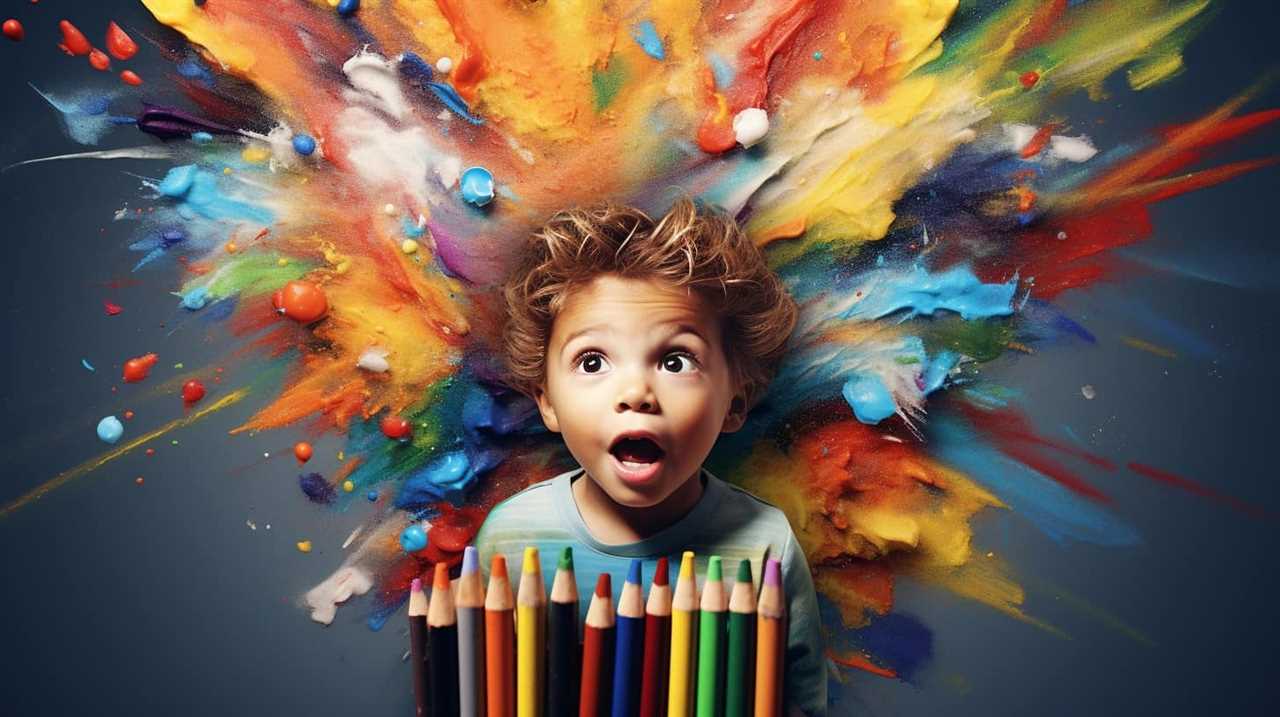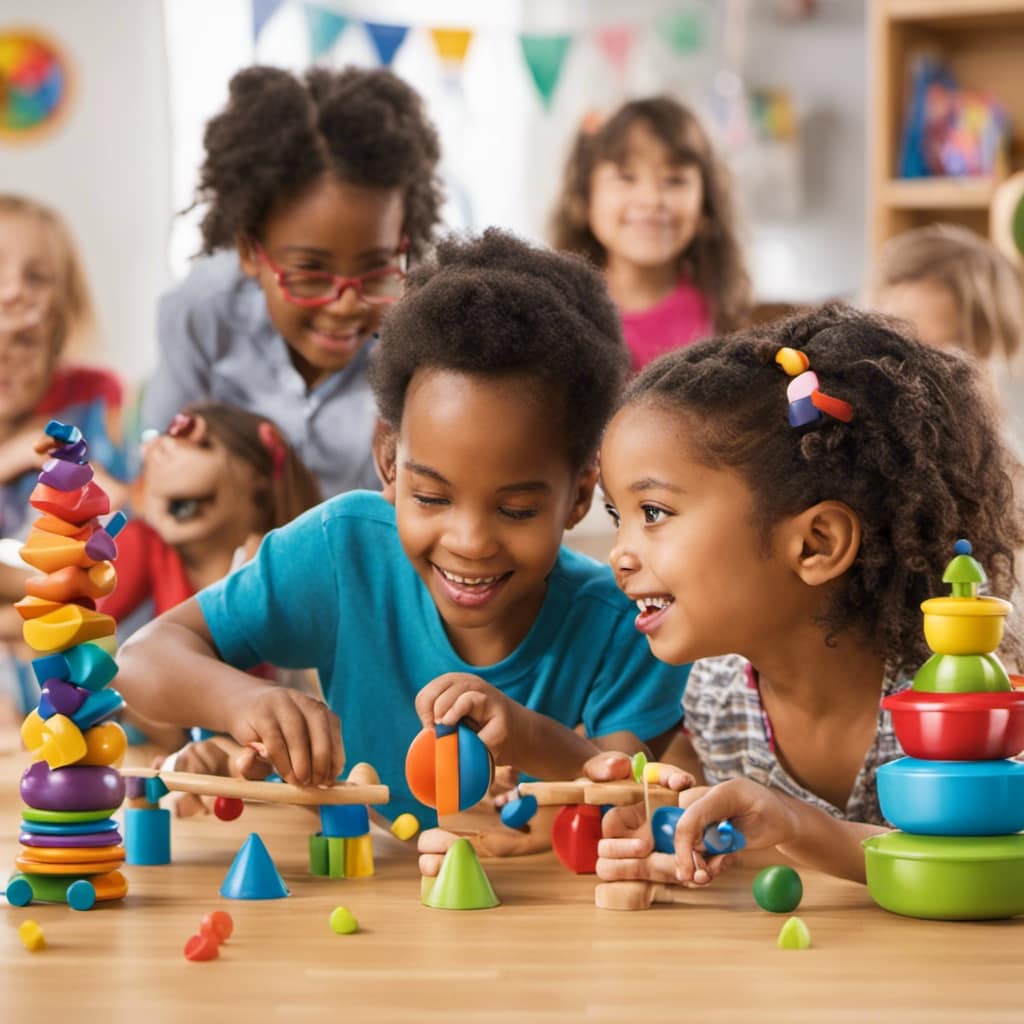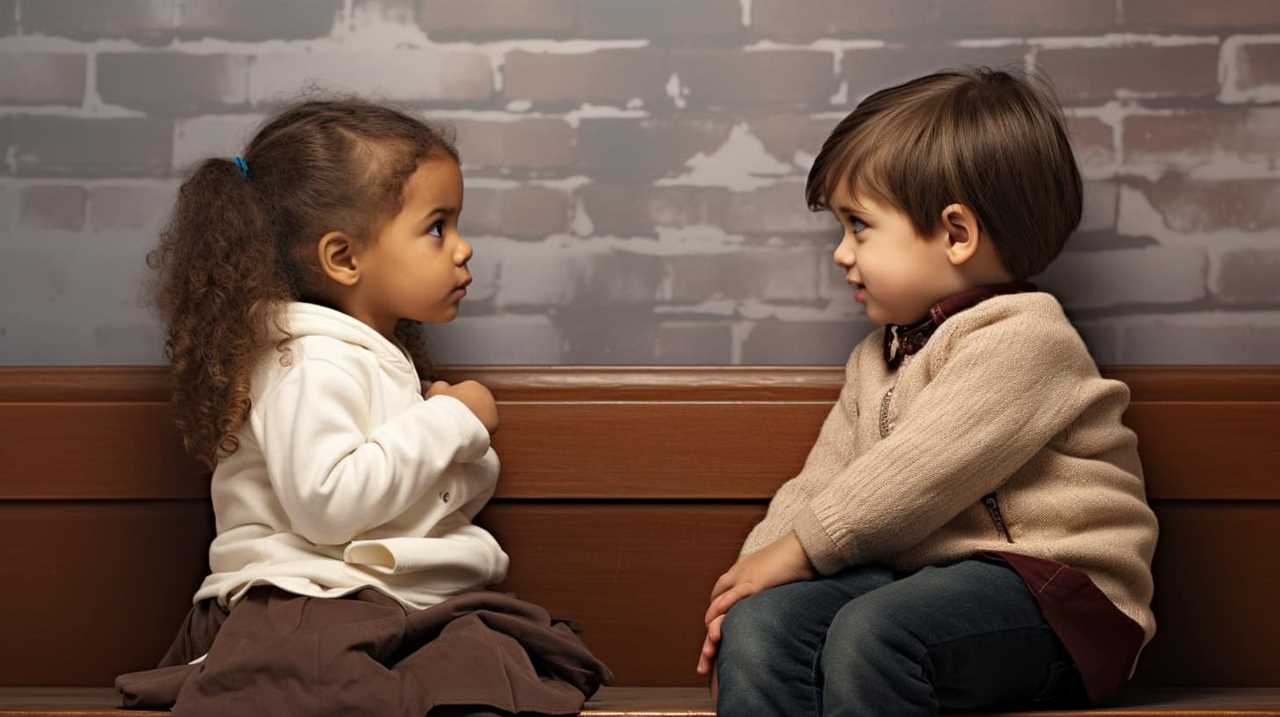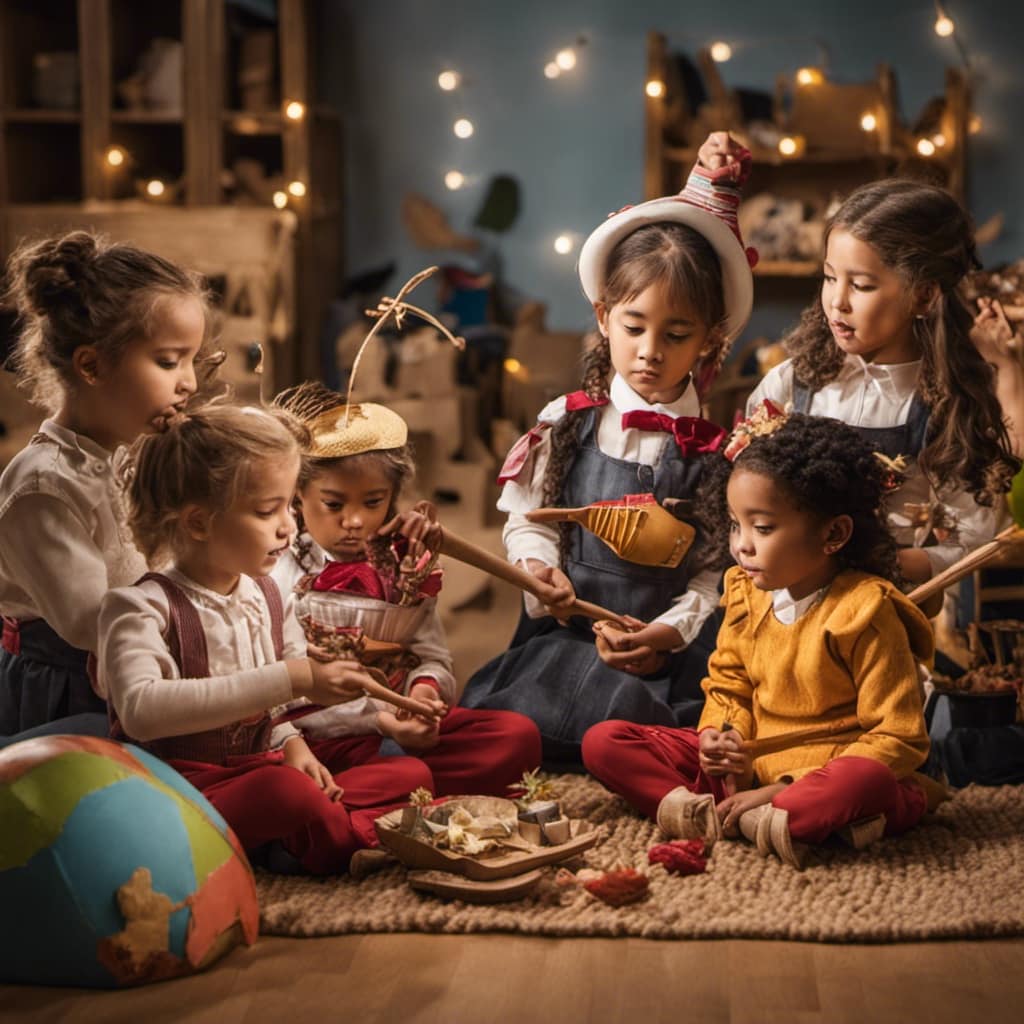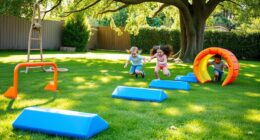As a teacher of young children, I have found that maintaining the correct balance of toys per child in preschool settings is like adding the perfect amount of spices to a meal – it enhances the flavor and enhances every bite.
In this article, we will explore the importance of this ratio in fostering learning, engagement, and development. With a balanced toy-to-child ratio, children can thrive in their play experiences, develop essential skills, and build relationships with their peers.
So, let’s dive in and discover the incredible benefits of maintaining this perfect balance.
Key Takeaways
- Toy-to-child ratio affects the quality of play and learning experiences
- Age-appropriate toy selection promotes optimal learning and engagement
- Maintaining an optimal toy-to-child ratio develops cognitive, social, and emotional skills
- Implementing a toy rotation system promotes creativity, problem-solving, and independence
Importance of Toy-to-Child Ratio in Preschool
Maintaining a balanced toy-to-child ratio in preschool is crucial for fostering optimal learning, engagement, and development. The toy to child ratio directly impacts play engagement and the quality of learning experiences. Research shows that an overload of toys can lead to difficulties in focus and engagement. Additionally, a high toy-to-child ratio can result in more conflicts among children.
To ensure skill development, it is important to consider the developmental needs of children when determining the ratio. Implementing a toy rotation system is another effective strategy that promotes skill development. By regularly rotating toys, children are exposed to new play experiences, preventing boredom and fostering creativity and imagination. This system also promotes social interaction and enhances learning opportunities.
Ultimately, maintaining an optimal toy-to-child ratio and implementing a toy rotation system are essential for supporting the overall development of young children in preschool settings.
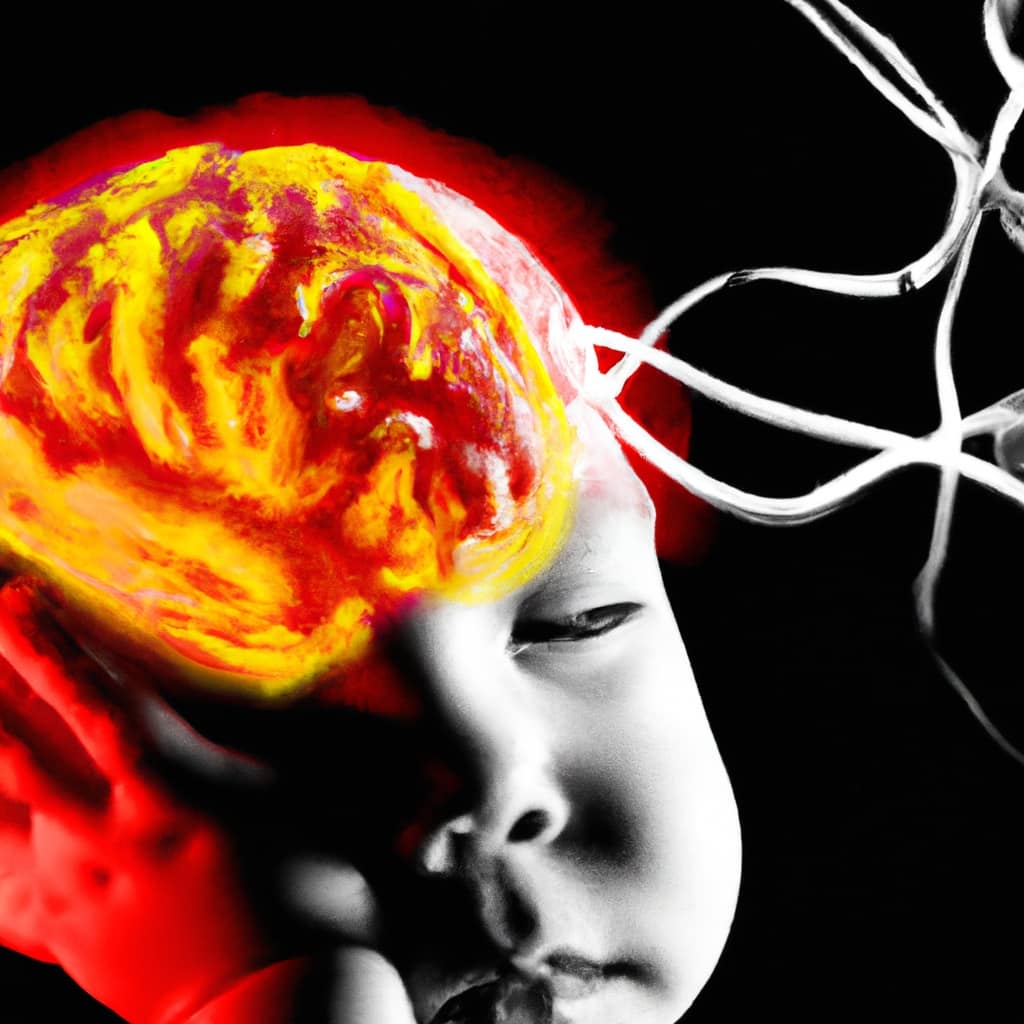
Impact of Toy Overload on Children
Excessive toys overwhelm children and hinder their ability to focus and engage in play. This overload has a significant impact on their attention span and social interaction.
Attention Span: With an abundance of toys, children can become easily distracted and have difficulty maintaining their focus on one activity. Their attention span may shorten, making it challenging for them to concentrate and learn effectively.
Social Interaction: Too many toys can lead to a lack of social interaction among children. When surrounded by an overwhelming number of toys, children may prefer to play alone rather than engage with their peers. This can hinder their development of social skills and cooperation.
Finding Balance: It is important to strike a balance between providing enough toys for children to explore and learn from, while also avoiding overwhelming them. Limiting the number of toys available at any given time can help children develop better attention spans and enhance their social interactions with others.
Conflicts Among Children and High Toy-to-Child Ratio
Balancing the number of toys available can help reduce conflicts among children in preschool. Conflicts resolution is an important skill for young children to develop, and managing toy sharing is a common source of conflicts in early childhood settings.
Research has shown that a high toy-to-child ratio can lead to more conflicts among children. When there are limited toys available, children may feel a sense of competition and struggle to share and take turns.
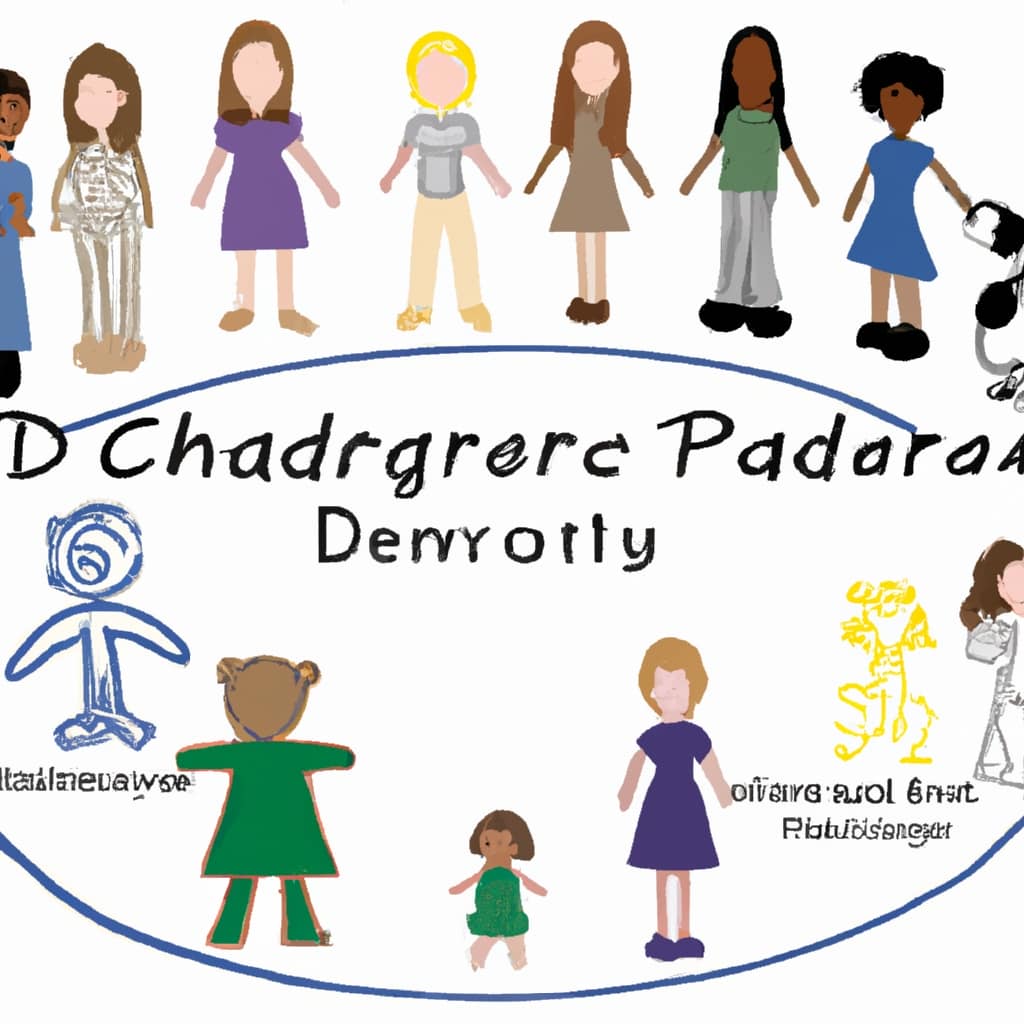
Considering Developmental Needs in Determining Ratio
When considering the needs of children, it is important to assess their individual developmental stages in order to determine an appropriate toy-to-child ratio.
To determine the optimal toy to child ratio in preschool, we need to consider the developmental needs of the children. Here’s how we can do it:
-
Understand the age and stage of each child: By considering the developmental milestones and abilities of each child, we can tailor the toy selection to their specific needs.
-
Provide a variety of toys: Offering a range of toys that cater to different interests and developmental domains ensures that children have access to activities that promote their overall development.
-
Observe and assess engagement: Regularly observing and assessing how children interact with the toys can help us determine if the current ratio is effective in promoting engagement and skill development.
Providing a Variety of Toys for Different Interests and Developmental Domains
I provide a diverse selection of toys that cater to different interests and developmental domains. Offering a variety of play options creates a stimulating learning environment for preschoolers.
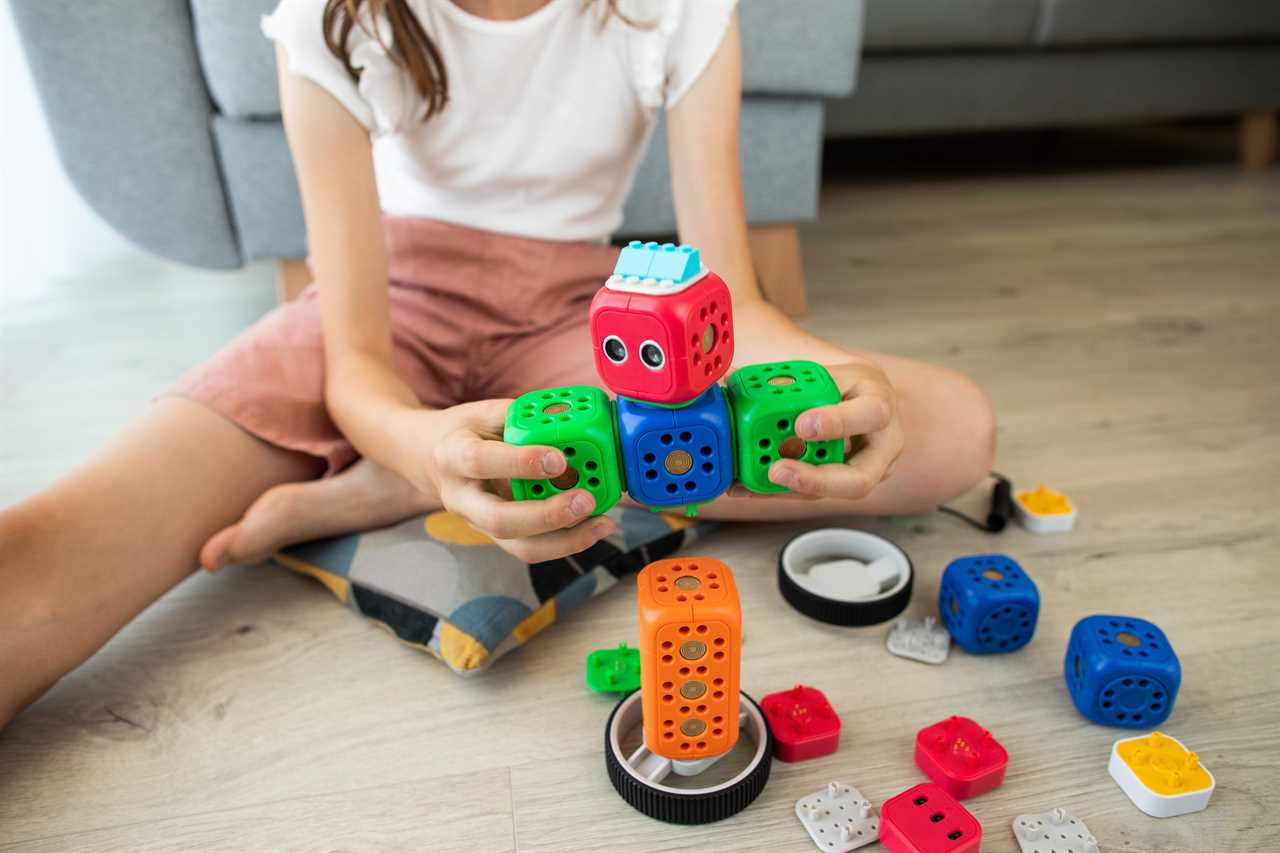
By providing toys that cater to different interests, children are more likely to engage in play and explore their individual preferences. This helps to foster a sense of curiosity and promotes active learning.
Additionally, offering toys that target various developmental domains, such as cognitive, social, and emotional skills, allows children to develop these areas in a holistic manner. The variety of toys also encourages creativity, problem-solving, and independence, as children are exposed to different play experiences.
Creating a stimulating learning environment through a wide range of toys enhances the overall development and learning experience of young children in preschool settings.
Factors to Consider in Age-Appropriate Toy Selection
Age-appropriate toy selection is crucial for promoting engagement and learning. By choosing toys that are suitable for a child’s age and developmental level, they can fully engage and benefit from play. This ensures that the toys provide just the right amount of challenge for optimal learning, neither too simple nor too complex.
Safety considerations should always be a top priority when selecting toys. It is important to choose toys that are made from non-toxic materials and meet safety standards. Regularly inspecting toys for any damage or wear and tear is crucial to prevent accidents and injuries.
Providing a variety of toys that cater to different interests and developmental domains is essential. Children have diverse interests and developmental needs. By offering a wide range of toys, children can explore and engage in various learning experiences. This fosters creativity, problem-solving skills, and overall development.
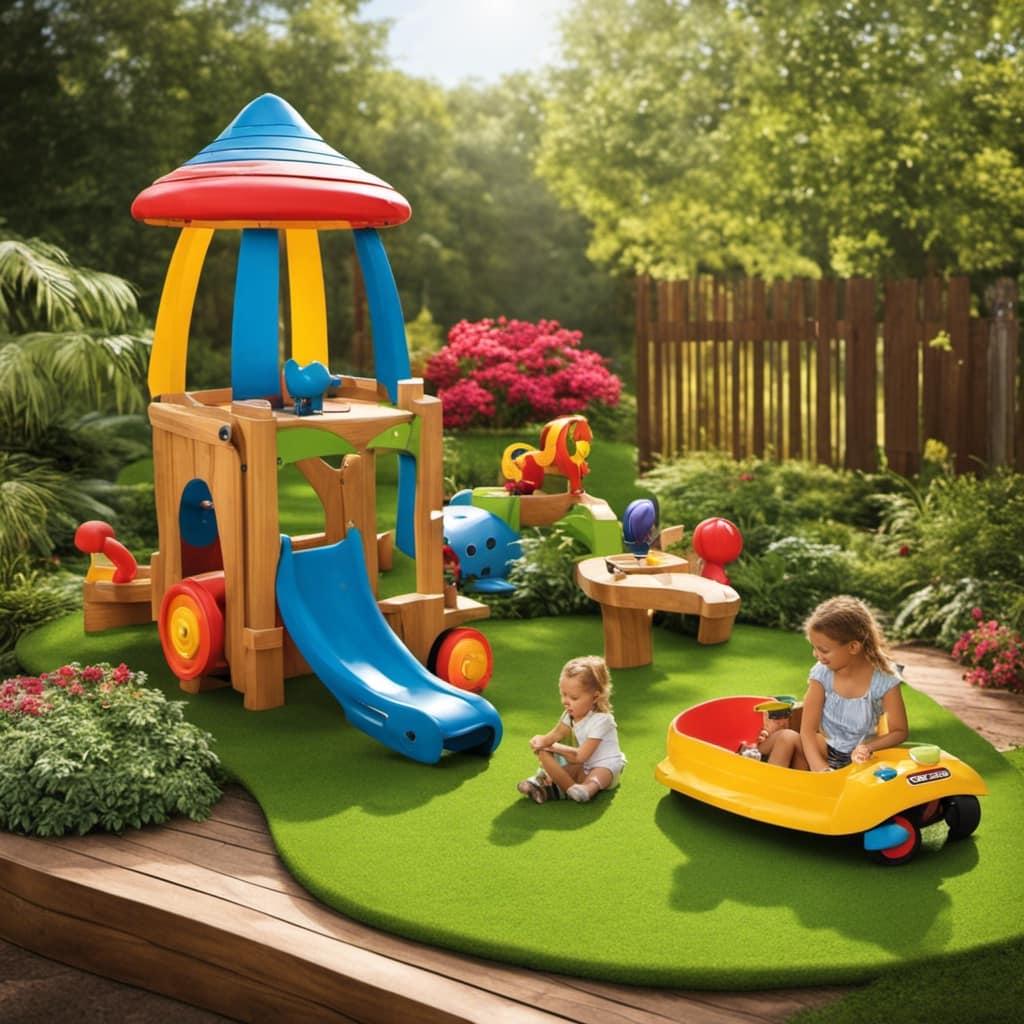
Safety Considerations and Meeting Standards in Toys
Now that we have discussed the factors to consider in age-appropriate toy selection, let’s focus on the safety considerations and meeting standards in toys.
When it comes to children’s toys, safety should always be a top priority. Toy safety standards are in place to ensure that the toys we give to our children are free from hazards and potential risks.
One important aspect of toy safety is the use of non-toxic materials. Toys made from non-toxic materials are crucial in preventing any harm or health issues that may arise from the exposure to harmful substances.
Regular Inspection of Toys for Safety Risks
Regularly inspecting toys for any damage or wear and tear that could pose a safety risk ensures that the toys remain safe for children to play with. Ensuring toy safety through regular checks offers several benefits:
-
Prevention of accidents and injuries: Regular inspections help identify any potential hazards or broken parts that could harm children during play.
-
Prolonged lifespan of toys: By catching and addressing any damage or wear and tear early on, regular inspections can extend the lifespan of toys, allowing children to enjoy them for a longer period.
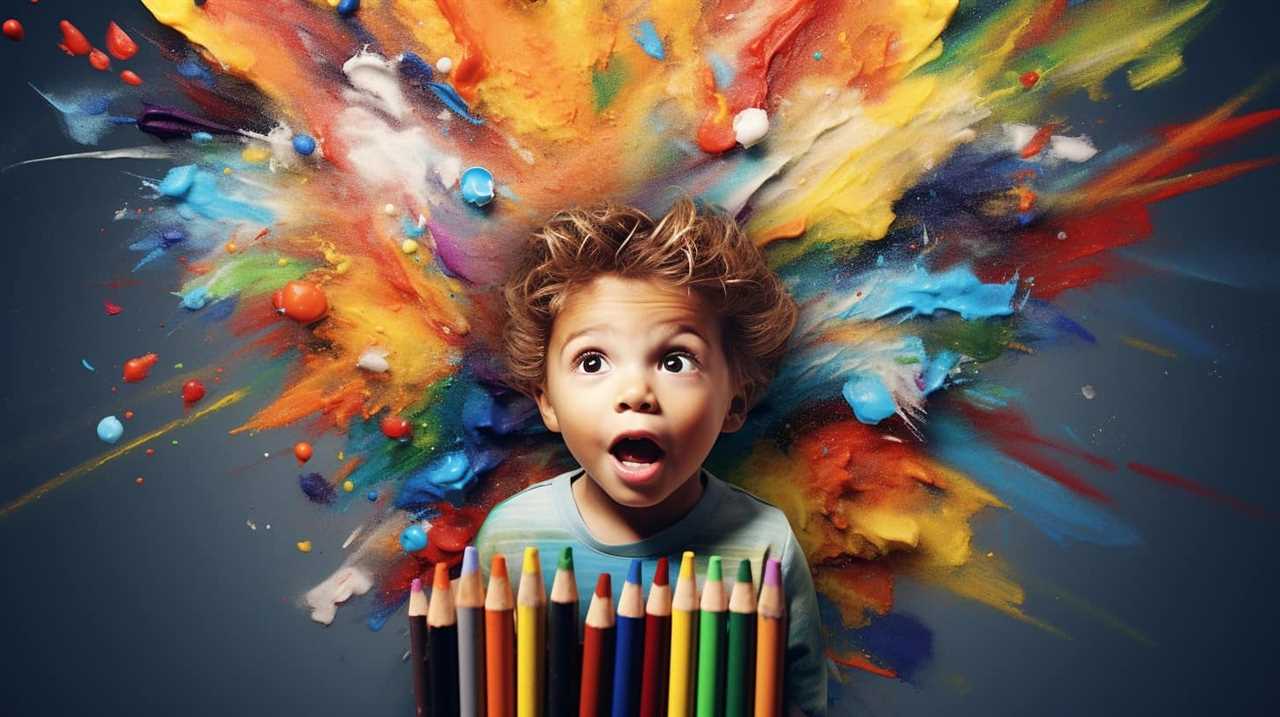
-
Peace of mind for parents and caregivers: Knowing that the toys have been thoroughly inspected and are safe provides reassurance to parents and caregivers, allowing them to relax and enjoy their child’s playtime.
Regular toy inspections are an essential part of maintaining a safe play environment for children, promoting their wellbeing and ensuring a positive play experience.
Benefits of Maintaining an Optimal Toy-to-Child Ratio
Maintaining a balanced number of toys for each child allows for equal access and promotes inclusivity in the preschool setting. This approach has numerous benefits that enhance the learning experience for young children.
One key benefit is the development of cognitive, social, and emotional skills. When children have equal access to toys, they can engage in cooperative play, problem-solving, and imaginative activities together.
Additionally, maintaining a balanced toy-to-child ratio prevents neglected or forgotten toys. With fewer toys, children are more likely to focus and concentrate on their play, leading to deeper engagement and skill development.
Furthermore, this approach aligns with the curriculum and learning objectives, ensuring that children have access to toys that support their overall development.
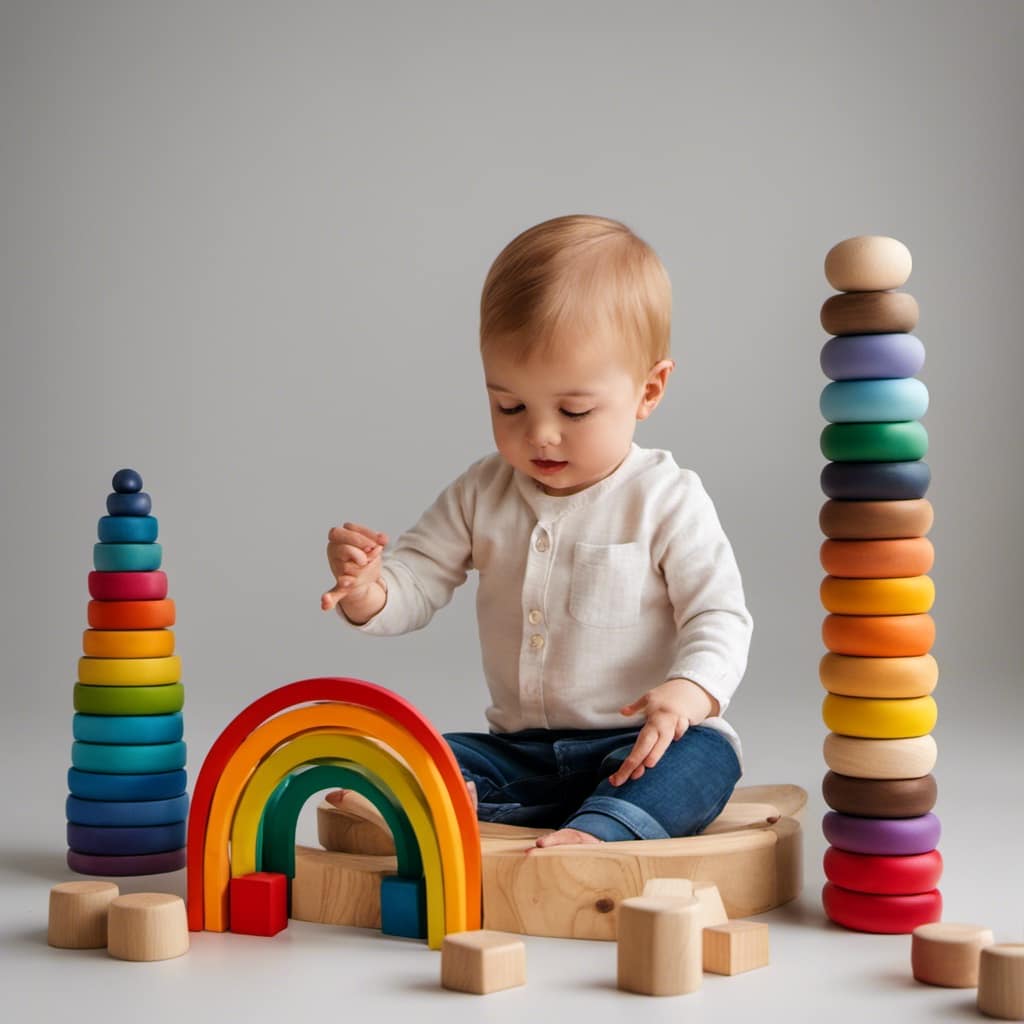
Ultimately, maintaining an optimal toy-to-child ratio enhances the learning experience and fosters a fair and inclusive environment for all preschoolers.
Frequently Asked Questions
How Does the Toy-To-Child Ratio Affect the Quality of Play and Learning Experiences in Preschool?
The toy-to-child ratio significantly impacts the quality of play and learning experiences in preschool. It affects cognitive development, as appropriate toy selection promotes optimal learning and engagement.
What Are the Potential Difficulties in Focus and Engagement That Can Arise From Toy Overload in Children?
Toy overload can lead to difficulties in focus and engagement for children. It overwhelms their senses, making it hard to concentrate. It’s important to provide a balanced toy-to-child ratio to promote optimal learning and development.
How Does a High Toy-To-Child Ratio Contribute to Conflicts Among Children in a Preschool Setting?
A high toy-to-child ratio can contribute to conflicts among children in a preschool setting. It can lead to competition, sharing difficulties, and disagreements. Strategies like teaching conflict resolution and promoting cooperative play can minimize conflicts and enhance social skills.
Why Is It Important to Consider the Developmental Needs of Children When Determining the Toy-To-Child Ratio?
Considering the developmental needs of children when determining the toy-to-child ratio is crucial because it ensures that the toys provided support their learning outcomes and promote their overall development in a preschool setting.
How Does Providing a Variety of Toys That Cater to Different Interests and Developmental Domains Enhance the Learning Experience in Preschool Settings?
Providing a variety of toys that cater to different interests and developmental domains enhances the learning experience in preschool settings by promoting creativity and encouraging cognitive development.

Conclusion
In conclusion, maintaining an optimal toy-to-child ratio in preschool settings is crucial for fostering learning, engagement, and development. The impact of a high toy-to-child ratio can be overwhelming, leading to difficulties in focus and increased conflicts among children.
By considering the developmental needs of children and providing a variety of age-appropriate and safe toys, we can create an environment that promotes creativity, imagination, and social interaction.
Implementing a toy rotation system ensures equal access to toys and enhances learning opportunities. So, let’s strive for the perfect toy-to-child ratio and watch our little learners thrive!
It’s like giving them a playground full of possibilities!


